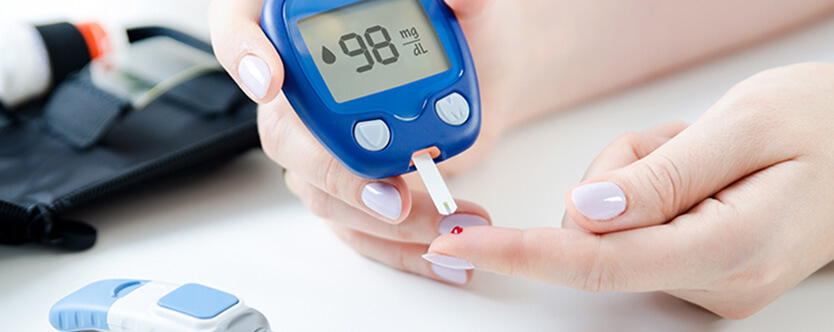A serious health disorder, diabetes is the name used to describe a metabolic condition of having higher than normal [the_ad id=”6114″]blood sugar levels. In diabetes, the body’s ability to produce or use insulin is impaired. This condition also negatively affects the health of the skin. Read along to know the skin conditions caused by diabetes and what can be done to prevent them.
1.Bacterial Infections
Several kinds of bacterial infections occur in people with diabetes like styes (infections of the glands of the eyelid), boils, folliculitis (infections of the hair follicles), carbuncles (deep infections of the skin and the tissue underneath) and infections around the nails.
2. Fungal Infections
The culprit in fungal infections of people with diabetes is often Candida albicans. This yeast-like fungus can create itchy rashes of moist, red areas surrounded by tiny blisters and scales. These infections often occur in warm, moist folds of the skin. Problem areas are under the breasts, around the nails, between fingers and toes, in the corners of the mouth, under the foreskin (in uncircumcised men), and in the armpits and groin.
3. Itching
Localized itching is often caused by diabetes. It can be caused by a yeast infection, dry skin, or poor circulation. When poor circulation is the cause of itching, the itchiest areas may be the lower parts of the legs.
4.Diabetic Blisters
Diabetic blisters can occur on the backs of fingers, hands, toes, feet and sometimes on legs or forearms. These sores look like burn blisters and often occur in people who have diabetic neuropathy. They are sometimes large, but they are painless and have no redness around them. They heal by themselves, usually without scars, in about three weeks. The only treatment is to bring blood sugar levels under control.
Some ways you can prevent skin problems with diabetes:
- After you wash with a mild soap, rinse and dry your body thoroughly. Use a moisturizer, but not between your toes.
- Avoid very hot baths and showers, which can dry your skin. Extended exposure to water softens the feet and makes your skin more prone to being pierced.
- Inspect your body for red spots, blisters and sores that could lead to infection.
- Look for any bumps or changes in appearance on your feet and have your doctor look at your feet at least twice a year during your physical examination.
- Treat cuts right away. Wash minor cuts with soap and water.
- Keep your blood glucose levels as close to normal as possible.
- Control blood pressure and cholesterol by taking prescribed medications, which will improve circulation and keep your skin healthy.
- Drink plenty of fluids, like water and caffeine-free, sugar-free drinks, to keep your skin hydrated.
- Eat foods rich in omega-3 fatty acids, which nourish the skin. This includes fish like salmon, sardines, albacore tuna and mackerel, as well as tofu and other forms of soybeans, walnuts, flaxseed and their oils.
If you are a diabetic and you notice any skin problems, consult your doctor immediately.
Source:

